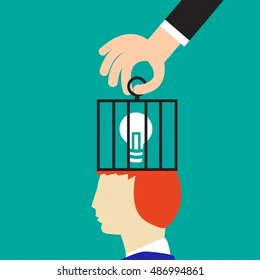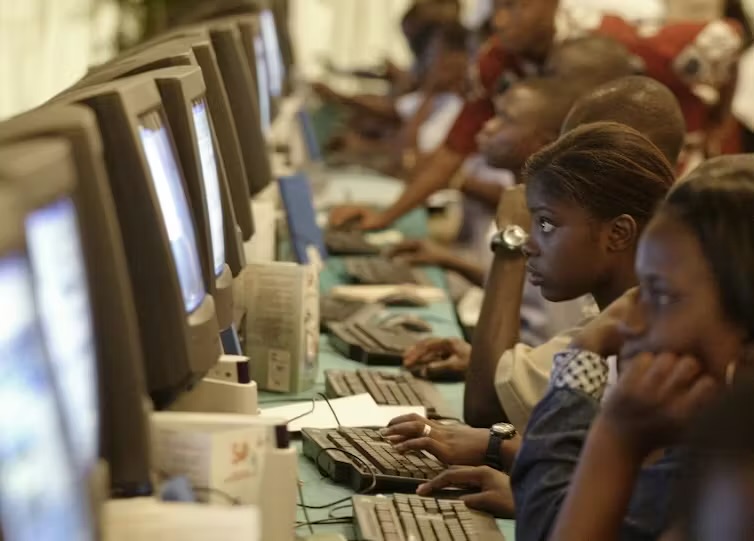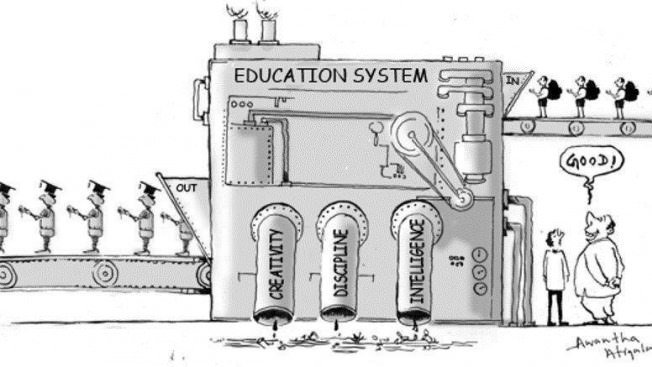The Pace of Progress: Why Education Lags Behind the Tech Revolution

In a world where technology moves at a blistering pace, reinventing industries from finance to healthcare in mere years, the global educational system appears to be stuck in a different era.
Despite being foundational to human development, our classrooms and teaching methods often feel frozen in time, largely resembling their counterparts from decades past.
This disparity isn’t by chance; it’s the result of unique and persistent barriers that have shielded education from the same forces of disruption that have transformed nearly every other sector.
Resistance to Disruption and Transformation
Despite being a cornerstone of society, education systems have shown a profound resistance to the kind of rapid technological disruption and structural transformation that has redefined industries like tech and finance.
SOURCE: Google
The primary reason is that education is fundamentally a social and cultural institution, not a private enterprise driven purely by profit.
The goals of education—fostering critical thinking, social development, and citizenship—are far more complex and difficult to measure than the key performance indicators (KPIs) of a corporation.
This complexity makes it hard to apply the "move fast and break things" ethos of the tech world.
Furthermore, education is often a public good, funded by taxpayers and governed by a web of regulations, standards, and bureaucratic oversight.
Unlike a tech startup that can pivot its business model overnight, a school system must navigate layers of government, teacher unions, and community expectations before implementing any significant change.
This institutional inertia creates a natural resistance to radical change, preferring incremental modifications over disruptive innovation.
The sheer size and interconnectedness of global educational systems make them incredibly difficult to overhaul quickly.
Institutional, Cultural, and Financial Barriers
Multiple barriers impede innovation and adaptation within global education. On an institutional level, the public sector’s bureaucratic structure is a significant roadblock.
SOURCE: Google
Decision-making is often slow, risk-averse, and driven by policy cycles rather than the speed of technological development.
The legacy systems, from physical infrastructure to administrative processes, are often deeply entrenched and difficult to replace.
A school's physical classroom, with its rows of desks and blackboards, remains a staple. Culturally, there is often a deep-seated resistance to change from both teachers and parents who are comfortable with traditional teaching methods.
Educators may lack the training or support to effectively integrate new technologies, while parents may be wary of unproven methods that they feel could put their children at a disadvantage.
A report by UNICEF highlighted that many teachers are not equipped for the digital age, which is a major barrier to progress.
Financial barriers are also a major constraint. Underfunded public school systems simply lack the capital to invest in new technologies, infrastructure upgrades, and comprehensive teacher training programs.
WhileEdTech companies may offer innovative solutions, the cost of deployment at scale is often prohibitive. The fragmentation of the education market also makes it difficult for companies to achieve the kind of economies of scale seen in other industries.
All these factors combine to create a perfect storm of resistance, where even the most promising innovations struggle to gain traction.
Outdated Curricula and Pedagogical Approaches
The consequences of outdated curricula and pedagogical approaches are severe. While the global economy demands skills in innovation, critical thinking, and collaboration, many educational systems continue to focus on rote memorization and standardized testing.
SOURCE: Google
This approach fails to prepare students for the complexities of the modern workforce, which is increasingly automated and knowledge-based.
A report by the World Economic Forum emphasizes that a mismatch between skills taught in schools and those needed in the job market is a key driver of youth unemployment.
Pedagogical approaches are similarly stuck in the past. The lecture-based model, where a teacher delivers information to passive students, is still prevalent.
This model fails to engage students in active learning or problem-solving, which are crucial for developing the adaptability and resilience needed in today's dynamic world.
The lack of personalized learning pathways means that students with different needs and learning styles are often left behind.
This is a sharp contrast to industries that have embraced agile, iterative, and user-centered approaches.
Lessons from Agile and Digital-First Strategies
The education sector can learn valuable lessons from the agile methodologies and digital-first strategies that have propelled rapid change in other industries. In the tech world, products are developed iteratively, with continuous feedback from users.
SOURCE: Google
The education sector could adopt a similar model, developing new curricula and learning tools in collaboration with students, teachers, and employers.
This would ensure that educational content is always relevant and effective. A study on agile education from Stanford University highlights its potential to make curricula more responsive to student needs.
A digital-first strategy, which treats technology as a core component of the educational experience rather than a mere add-on, is also vital.
This involves moving beyond simply giving students tablets to fully integrating digital literacy and computational thinking into the curriculum. Industries have also shown that data-driven decision-making can lead to remarkable gains.
Education could leverage data analytics to understand student performance, identify areas where a curriculum is failing, and personalize learning paths.
This approach would require a significant investment in both technology and a cultural shift toward a more empirical, evidence-based approach to teaching.
The Lack of Market Pressure and Accountability
The lack of direct market pressure and clear accountability mechanisms is a key reason for education's slow evolution, particularly when compared to private sectors.
In a for-profit industry, a company that fails to innovate risks losing customers and market share, which acts as a powerful catalyst for change.
The banking sector, for example, has been forced to innovate rapidly to compete with agile fintech startups that threaten to disrupt their business models.
Education, particularly public education, operates in a different environment. While there are pressures from parents and communities, there is no direct "market pressure" that forces a school to adopt new technologies or a different pedagogical approach to survive.
Accountability in education is often based on standardized test scores, which can be a poor measure of a school's true effectiveness or its ability to prepare students for the future.
This narrow focus can discourage innovation in favor of teaching to the test. In contrast, the private sector often has clear, measurable accountability mechanisms related to revenue, customer satisfaction, and shareholder value.
Without a clear and compelling incentive for change, education systems can easily fall into a state of inertia.
The Long-Term Consequences of Stagnation
The long-term consequences of this stagnation are severe for individual learners, national economies, and global competitiveness.
SOURCE: Google
For individual learners, a stagnant education system leaves them unprepared for the demands of the modern workforce, increasing their risk of unemployment and underemployment.
They may struggle to adapt to new technologies and may lack the critical skills needed to navigate a complex world.
On a national economic level, a poorly educated workforce is less productive, less innovative, and less likely to attract high-value industries. This can lead to lower GDP growth and a decline in a nation's ability to compete on the global stage.
Globally, this stagnation threatens to widen the skills gap between developed and developing nations, reinforcing cycles of poverty and inequality.
In a world where progress is driven by innovation, a country's ability to educate its population is its most valuable asset.
The World Bank's "World Development Report 2019" directly links a lack of educational quality to a country's inability to thrive in the digital economy.
By failing to keep pace with the tech revolution, the global education system is not just failing its students; it is failing to secure a prosperous and stable future for all.
The urgency of this crisis demands not just incremental changes but a fundamental rethinking of the very purpose and structure of education for the 21st century.
You may also like...
Arsenal Stunned! Captain Odegaard Out For NINE Games, Title Hopes Dented!

Arsenal captain Martin Odegaard is set to miss at least nine games due to a medial collateral ligament injury sustained ...
Super Eagles Face Crucial World Cup Qualifier Against Benin: Lineup Battles and Fate on the Line!
)
Nigeria's Super Eagles face a decisive 2026 FIFA World Cup qualifier against Benin, needing a victory and favorable resu...
Brad Pitt's Highly Anticipated 'F1' Race Movie Gets Exclusive Apple TV Streaming Date!

“F1: The Movie,” starring Brad Pitt, is set for its global streaming debut on Apple TV on December 12 after a stellar th...
Hollywood Heavyweights Face Legal Storm Over Israel Film Boycott

Prominent U.K. screen organizations and studios have received a legal warning from U.K. Lawyers for Israel regarding a b...
Wale Drops Truth Bombs: New Album 'Everything Is a Lot' Promises Raw Vulnerability!

Wale is set to release his eighth studio album, "Everything Is a Lot," on November 14 via Def Jam, four years after his ...
Taylor Swift Shocks Fans with Epic 'Eras Tour' Docuseries & Concert Film Finale!

Taylor Swift is bringing her record-breaking Eras Tour to Disney+ with two new specials debuting on December 12. Fans ca...
SHOCKING REVELATION: Diane Keaton's Last Moments Unveiled by Harrowing 911 Audio

Hollywood icon Diane Keaton has passed away at 79 after a sudden health decline, with emergency services audio now publi...
ROYAL ALERT! King Charles Set to Announce Monumental Historic Event Soon

King Charles and the royal family are set to host German President Frank-Walter Steinmeier for a historic state visit in...





